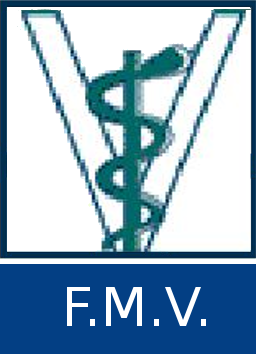Les Micro-ARN comme nouveau moyen diagnostique et thérapeutique de l'ostéosarcome canin
Ghislain, Camille 
Promoteur(s) :
Druet, Tom 
Date de soutenance : 27-aoû-2021 • URL permanente : http://hdl.handle.net/2268.2/12765
Détails
| Titre : | Les Micro-ARN comme nouveau moyen diagnostique et thérapeutique de l'ostéosarcome canin |
| Titre traduit : | [en] MicroRNAs as biomarkers for diagnosis and as treatment of canine osteosarcoma |
| Auteur : | Ghislain, Camille 
|
| Date de soutenance : | 27-aoû-2021 |
| Promoteur(s) : | Druet, Tom 
|
| Membre(s) du jury : | Charlier, Carole 
Farnir, Frederic 
Georges, Michel 
|
| Langue : | Français |
| Nombre de pages : | 37 |
| Discipline(s) : | Sciences du vivant > Médecine vétérinaire & santé animale |
| Institution(s) : | Université de Liège, Liège, Belgique |
| Diplôme : | Master en médecine vétérinaire |
| Faculté : | Mémoires de la Faculté de Médecine Vétérinaire |
Résumé
[fr] L'osteosarcome canin est un cancer malin très agressif, il représente 80 à 90% des tumeurs primaires chez le chien (Wilk et al., 2021). Le pronostic est très sombre. Les microARN régulent beaucoup de facteurs de transcription, ils contrôlent la croissance cellulaire, la prolifération et l'apoptose. Plusieurs études ont montré que les microARNs ont un rôle significatif dans la formation de tumeurs. Certains ont été identifiés comme étant oncogènes, ou suppresseurs de tumeurs. Ils ciblent des gènes impliqués dans le développement et la progression tumorale, et dans le processus métastatique. Par conséquent, les micro-ARN tels que MiR-9, MiR-302b, MiR-106B, MiR-25, MiR-214, MiR-126 et Mi-R34a peuvent être utilisés comme biomarqueurs pour le diagnostic ou comme traitement dans l'ostéosarcome canin.
[en] Canine osteosarcoma is a very aggressive and malignant cancer, representing up to 80-90% of primary bone tumours in dogs (Wilk and al., 2021). The prognosis is very low. MicroRNAs regulate a lot of transcription factors, they control the cell growth, the proliferation and the apoptosis.
Various studies have shown that microRNAs have a significant role in tumour formation. Some of them have been identified as oncogenes, or tumour suppressors. They target genes involved in the tumours development and progression, and in the metastasis process.
Therefore, microRNAs as MiR-9, MiR-302b, MiR-106B, MiR-25, MiR-214, MiR-126 and MiR-34a could be used as biomarkers for the diagnosis and also as treatment in canine osteosarcoma.
Fichier(s)
Document(s)

 GHISLAIN_Camille_TFE_FMV_Juin2021_provisoire.pdf
GHISLAIN_Camille_TFE_FMV_Juin2021_provisoire.pdf
Description:
Taille: 757.6 kB
Format: Adobe PDF

 GHISLAIN_Camille_TFE_FMV_Aout2021_provisoire.pdf
GHISLAIN_Camille_TFE_FMV_Aout2021_provisoire.pdf
Description:
Taille: 968.65 kB
Format: Adobe PDF

 GHISLAIN_Camille_TFE_FMV_aout2021_définitif.pdf
GHISLAIN_Camille_TFE_FMV_aout2021_définitif.pdf
Description:
Taille: 1.44 MB
Format: Adobe PDF
Citer ce mémoire
L'Université de Liège ne garantit pas la qualité scientifique de ces travaux d'étudiants ni l'exactitude de l'ensemble des informations qu'ils contiennent.


 Master Thesis Online
Master Thesis Online




